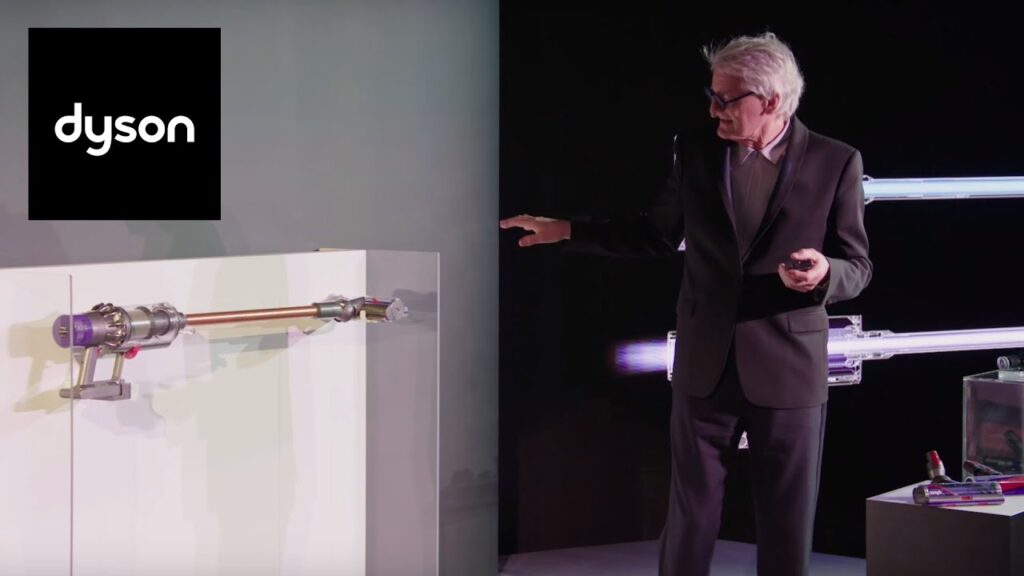
Sir James Dyson born 2 May 1947 in Cromer, Norfolk, one of three children, and named after his grandfather, James Dyson. is an English inventor, industrial designer, farmer and billionaire entrepreneur who founded Dyson Ltd. He is best known as the inventor of the dual cyclone bagless vacuum cleaner, which works on theprinciple ofcyclonic separation. According to the Sunday Times Rich List 2022, he is the second richest person in the UK with an estimated net worth of £23 billion. He was educated at Gresham’s School, an independent boarding school in Holt, Norfolk, from 1956 to 1965.
Sir James enrolled himself into the school of art as an experiment, then discovered design in the mid 60’s and moved on to study furniture design to architecture design at Royal college of Art. His first design project was the Sea Truck in 1970 while he was still in college. This was when he had approached Jeremy fry of the Fry chocolate family, and an inventor and founder of an engineering company, for financing, and Jeremy instead offered him a design job. As a kid, James was good at long distance running, this validates his determination to pursue ideas for long periods of time or even fighting tough lawsuits over years.
Even more inspiring to the above fact is that Sir James is an amateur engineer, never having formally taken a course or training to become a professional engineer. Sir James developed his engineering skills by self-learning over the years. Asking questions like how it works, how it can be made to work better and thinking like an engineer. This way developing his engineering skills by self-discovery and failure than by taking formal courses on the subject.
Sir James Dyson through his investment in science and technology and working alongside Dyson’s 6,000 (approximately) engineers and scientists, develops products that solve problems ignored by others. First original invention the Ballbarrow, then the vacuum cleaner, hand dryer, hair dryer, air purifiers etc. The most successful of all being the Vacuum Cleaner. In the late 1970s, Dyson had the idea of using cyclonic separation to create a vacuum cleaner that would not lose suction as it picked up dirt. He became frustrated with his Hoover Junior’s diminishing performance: the dust bag pores kept becoming clogged with dust thus reducing suction. The cyclone idea came from a sawmill that used cyclone technology. He filed a series of patents for his dual cyclone vacuum cleaner EP0037674 in 1980. Partly supported by his wife’s salary as an art teacher, and after five years and about 5,127 prototypes, Dyson launched the “G-Force” cleaner in 1983. However, no manufacturer or distributor would handle his product in the UK, as it would have disturbed the valuable market for replacement dust bags, so Dyson launched it in Japan through catalogue sales. Manufactured in bright pink, the G-Force sold for the equivalent of £2,000. It won the 1991 International Design Fair Prize in Japan. Dyson set up his own manufacturing company, Dyson Ltd. In June 1993, he opened a research centre and factory in Malmesbury, Wiltshire as he found rejection from most manufactures then.
Dyson’s breakthrough in the UK market came more than ten years after the initial idea, through a TV advertising campaign in which it was emphasised that, unlike most of its rivals, the Dyson vacuum did not require the continuing purchase of replacement bags. At that time, the UK market for disposable cleaner bags was £100 million. The slogan “say goodbye to the bag” proved more attractive to the buying public than a previous emphasis on the suction efficiency that its technology delivers.
The James Dyson Foundation is formed to inspire the next generation of engineers through scholarships, engineering workshops, university partnerships, and the annual James Dyson Award, an international student design competition. In 2017 James established The Dyson Institute of Engineering and Technology, where undergraduate engineers pay zero tuition and earn a full salary while completing their degree studies and working on real-life projects alongside world-experts in Dyson’s global engineering, research, and technology teams.
James is the author of the new book Invention: A Life, the story of how he came to be an inventor himself and built Dyson, leading it to become one of the most inventive technology companies in the world. The book is an excellent effort to pass on his experience and philosophy to future generations –
“Self learning the best way to learn”
“If you haven’t failed you haven’t learnt anything”
“Invention is not about being brilliant but about being logical and persistent”
“Most development requires considerable human effort “
“Develop technology, invent stuff not for commercialising but licensing”
“Nothing wrong in being dissatisfied always, so as to
Improve things”
“Drop the fear of failure”
Sir James was awarded a CBE in 1996 and a Knight Bachelor in 2007 and was elected a Fellow of the Royal Society in 2015 and appointed to the Order of Merit in the 2016 New Year Honours. If one has to find a modern-day Leonardo Da Vinci and a Thomas Edison, then I will recommend one to look at Sir James Dyson.
References:
Wiki – James Dyson https://en.wikipedia.org/wiki/James_Dyson
James Dyson – Invention: A Life (Book)